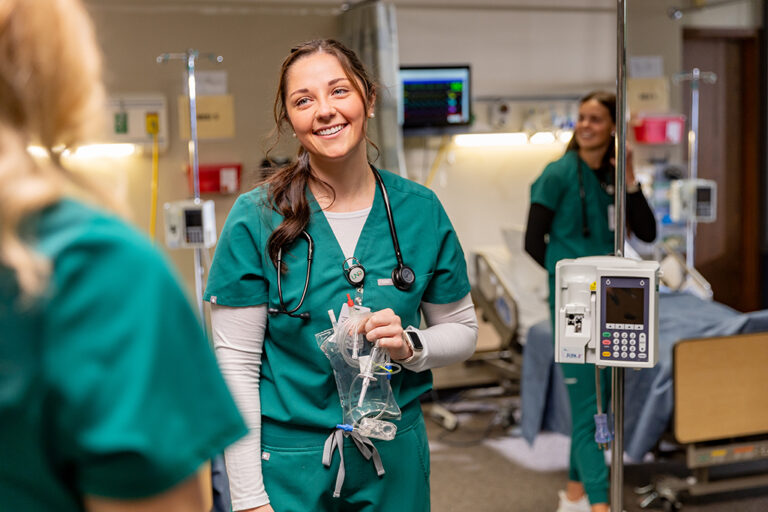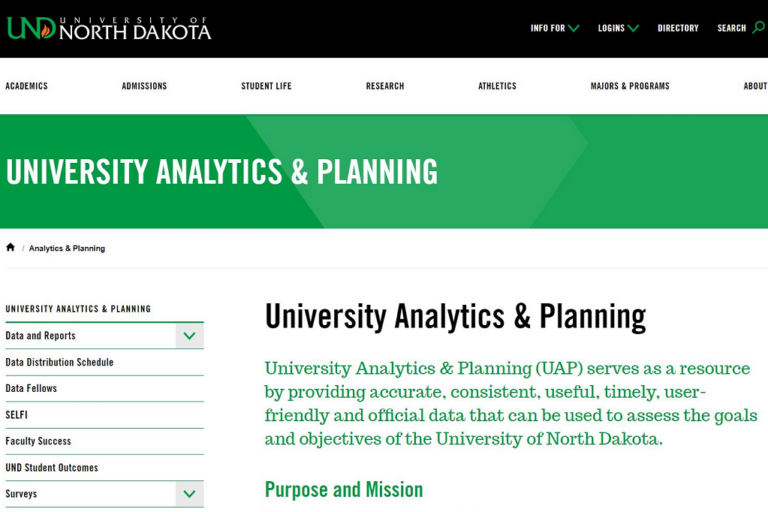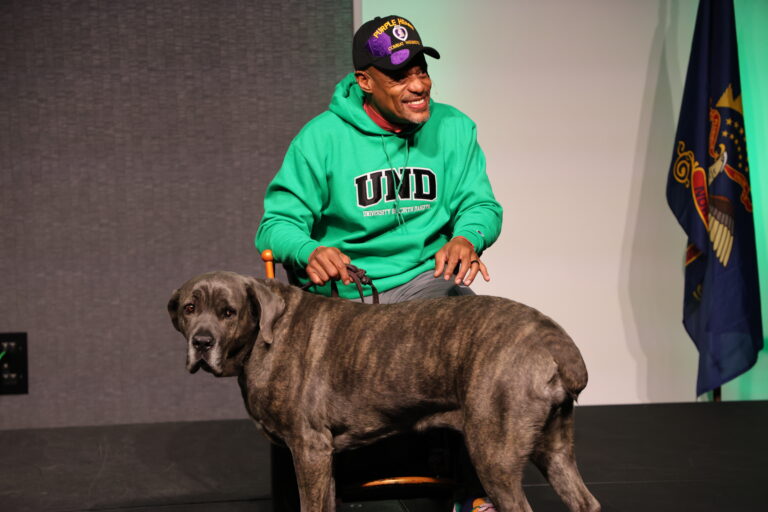Road to ‘R1’: Broadening Research Impact
Quest for highest-research-activity classification helps students, communities and economy
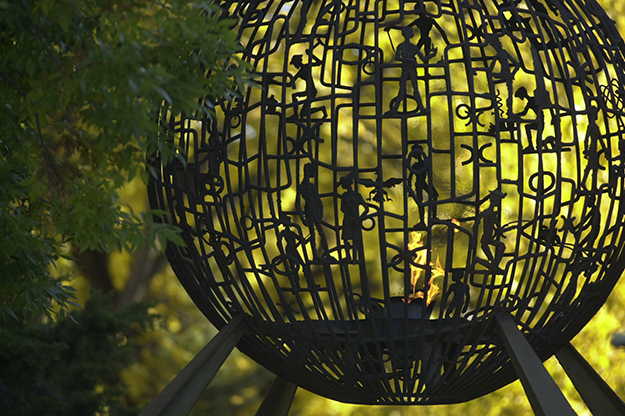
UND is looking for a higher class of company – but not just to show off.
Anchored firmly in the One UND Strategic Plan is Goal No. 4: “to enhance discovery at a level consistent with most research-intensive universities.” It alludes to universities and institutions often dubbed “Carnegie R1,” or doctoral universities with the “highest research activity.”
UND, along with North Dakota State in Fargo, South Dakota State, the University of South Dakota and myriad like-sized institutions around the country are considered “Carnegie R2,” a step below.
The R1s of the world include Harvard, Yale, MIT and more regional members such as the Universities of Minnesota and Michigan.
But it also includes non-urban centers not readily known for world-class research such as the University of Delaware, Hawaii, West Virginia, Nebraska-Lincoln and New Mexico.
By capitalizing on its unique geographical setting, the University of Hawaii at Mānoa, for example, is recognized as a “land-, sea- and space-grant” institution, raking in more than $317 million in extramural research expenditures. That puts Hawaii in the middle of the road among its R1 peers.
Still, the university uses its research influence to diversify the Aloha State’s economy beyond tourism and its role as a national defense hub.
By comparison, UND’s most recently reported research expenditures were about $102 million. The University wants to increase that number to $120 million by 2022.
Even beyond that, though, UND would like to stay on a trajectory toward Carnegie R1 status — not for the sake of doing it, but because it’s the right thing to do.
“It’s not that we just want to be R1,” said Grant McGimpsey, recently retired UND vice president for research and economic development. “Rather, we want to be doing things that R-1 institutions do. They have research enterprises that are incredibly impactful on their students and on the community and on the economy around them.”
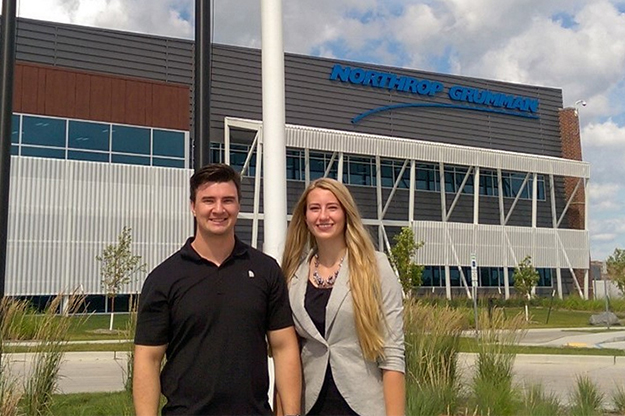
Student impact
That’s why a joint proposal from North Dakota’s two big research universities — to significantly increase what the state invests in research — is so important. The proposal, if funded, would mean an additional $25 million per year for both over the next biennium.
For UND, which is targeting five research Grand Challenges (biomedical sciences, rural health, unmanned and autonomous systems, energy and sustainability, and Big Data), the boost would expedite its path to R1. But more importantly, it would assist UND’s research efforts to diversify the state’s economy beyond agriculture and energy exploration.
“We want to be involving our students in that research as much as we can,” McGimpsey said, “and ultimately, we want to be driving the economic development of the state.”
UND students already are benefiting from this kind of activity.
Wilson Lysford, who graduated with a mechanical engineering degree in May, took advantage of an internship at Northrop Grumman, a corporate leader in UAS and other technologies, to get a head start on his future. He was hired to be part of the vehicle engineering team, working on sensors for the Global Hawk.
“The best part is getting to work with some of the more experienced engineers,” said Lysford, a native of Detroit Lakes, Minn. “I sit next to a 10-year veteran and am learning from him as I begin my engineering career.”
Lysford is not alone at Northrop Grumman, in the Grand Sky UAS business park, about 13 miles from UND and adjacent to one of six national FAA test sites for UAS development and the Grand Forks Air Force Base.
“We are pleased to have several students taking part in our robust internship program at Grand Sky,” said David Hambleton, Grand Sky Program Manager and Site Lead for Northrop Grumman. “We appreciate the partnership with UND in conducting this worthwhile program.”
David Flynn, professor of economics and finance at UND, said, as universities improve their research standing, the benefit to students and to nearby companies who hire them, cannot be overstated.
“Research is not just lining the pockets of researchers,” he said. “And it’s not just about faculty being at more prestigious institutions — what it’s really about is that we are doing this research with North Dakota students as part of innovative research enterprises, helping research clusters develop and grow and in some cases, changing public policies not just for the state, but for the nation and world.”
Big Data push
And UND is helping raise its own research standing in other ways.
UND President Mark Kennedy recently announced the University would be investing $10 million over five years in CEM, supplementing College resources to hire six new computational (Big Data) scientists. The new hires are intended to bolster the University’s standing in future-facing technologies such as artificial intelligence (A.I.), machine learning and cyber studies, technologies vital to the state’s economic health.
“We view this as a central resource for the University,” Kennedy said. “As many leaders in artificial intelligence have already said, ‘A.I. is the new electricity.’”
The investment will be far more than mere salary and benefits for the six scientists. Each would come with expertise and resources to apply computational expertise to research in all fields across campus as well as provide fertile ground for more post-docs, Ph.D.s and funded research opportunities.
The new hires will be part of a “Big Data Hub,” to be housed in a renovated and teched-up Babcock Hall when completed, UND’s historic first home for engineering education, and right across the street from CEM’s current administrative headquarters.
Hiring computational scientists is an important next step for UND’s quest to join the league of R1 institutions. And recent reports show UND’s efforts may be paying off.
Last year, the National Science Foundation issued its updated Higher Education Research and Development report for FY ’17. UND ranked 151st, up 16 places from the last update.
“We are moving up the ranks, and with these additional hires, we should move up even further,” Kennedy said.
Better metrics
McGimpsey said the Carnegie Foundation uses metrics to determine whether institutions will be listed R1. He said UND’s current ranking is based on numbers from 2015, when UND was not reporting its research data accurately.
McGimpsey’s office recently instituted internal reporting changes that better reflect the University’s total research expenditure picture. As a result, UND’s FY17 research expenditures were $30 million more than it reported the year before.
Research expenditures, in both scientific and nonscientific fields, are crucial metrics for the Carnegie rankings.
“We will definitely have increased funding the next that the rankins appear,” McGimpsey said.
The organization also tracks post-doctoral researchers at a university and doctoral degrees granted, with PH.Ds in STEM (science, technology engineering and mathematics) weighted more heavily.
McGimpsey said UND’s current research funding would need to increase by about 20 percent and post-docs would need to be about 50 percent higher to be realistically considered for R1 status.
“That’s where we’d have to go,” he said. “And those are doable.”
More than numbers, McGimpsey stressed that R1 is a convenient label for where UND wants to be and what it wants to be doing for its students and the state.
“It really means that we want to be doing impactful research,” he said. “That’s not to say were not doing that now – we just want to be doing more of it.”
